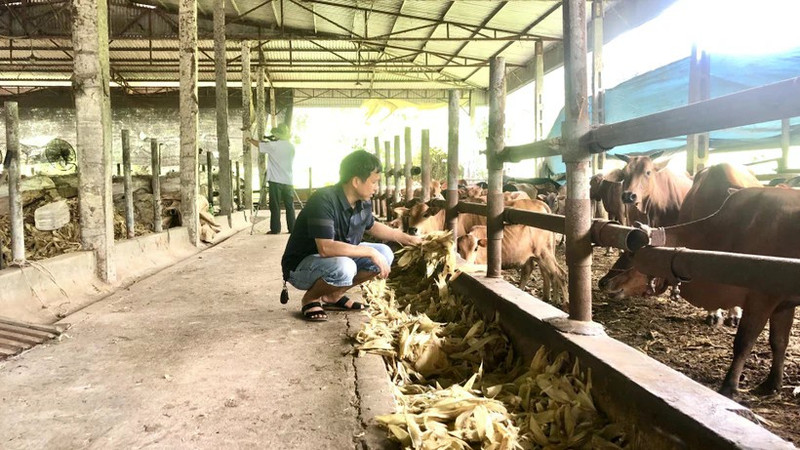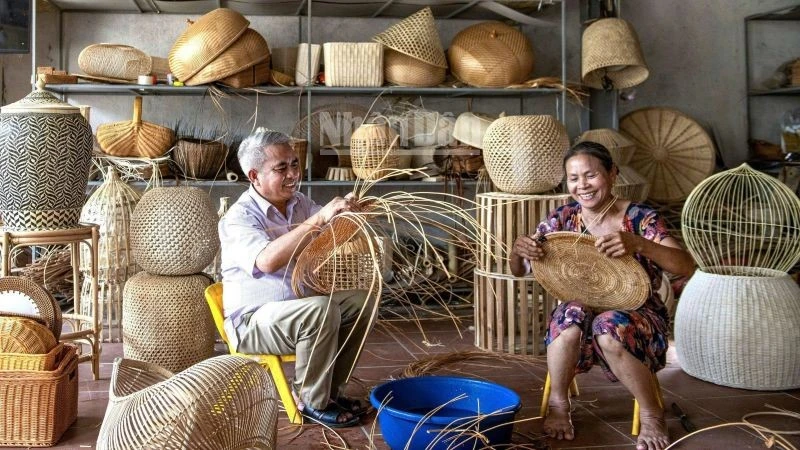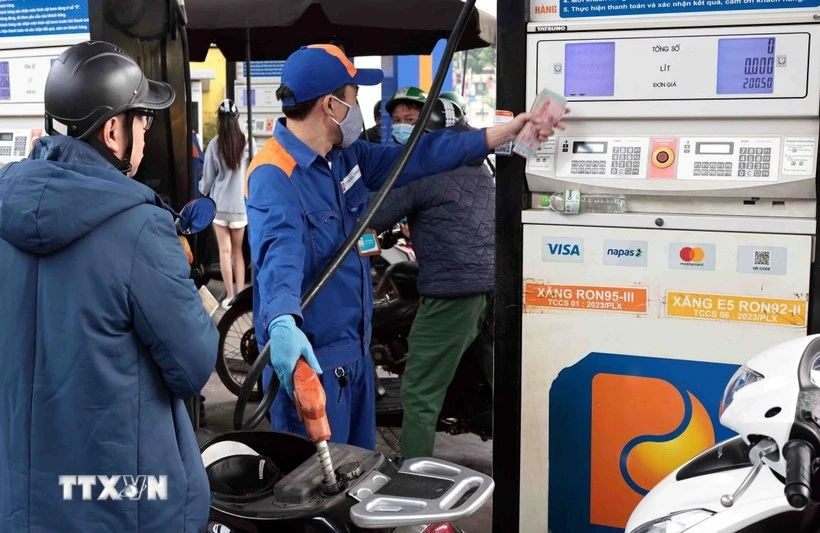Currently, livestock accounts for a significant share (over 25%) of the agricultural sector and is a key livelihood for more than 10 million rural households. In 2024, the estimated total output of live meat reached 8.26 million tonnes, including 5.16 million tonnes of pork and 2.43 million tonnes of poultry meat. Livestock product export turnover stood at 533.6 million USD.
Le Minh Linh, Deputy Director of the National Agricultural Extension Centre (Ministry of Agriculture and Environment), said: “Avian influenza, African swine fever, foot-and-mouth disease in cattle, and lumpy skin disease in buffaloes and cows have severely impacted our livestock sector in recent years. Hence, disease-free livestock farming has become urgent to ensure farmers’ incomes and a safe supply chain for export.”
In the past five years, the National Agricultural Extension Centre has collaborated with relevant units and localities to support the development of numerous projects in bio-secure and disease-free livestock farming, generating high economic returns for farmers.
The pig farming sector implemented 15 projects, resulting in high-quality products that meet food hygiene and safety standards. Thanks to supply chain linkages, prices remained stable and 10–15% higher than the market average, with profits increasing by 130,000 to 350,000 VND per pig.
The poultry sector saw 24 projects applying bio-secure farming processes that helped control and curb dangerous infectious diseases while providing safe products for consumers.
According to assessments, some models with product distribution linkages recorded economic efficiency gains of 11–17.5%, and profits rose by 3–7 million VND per 1,000 meat chickens compared to traditional farming methods.
Nguyen Huu Tho, Director of the Bac Ninh Sub-Department of Livestock Production, Animal Health and Aquaculture, said: “The province is currently raising about 300,000 pigs, 20,000 buffaloes and cows, and 5.7 million poultry birds. To ensure sustainable livestock development, Bac Ninh has built 17 disease-free livestock establishments and zones. According to assessments, these achieved significantly higher efficiency than small-scale farming.”
Ngo Tien Duc, farm manager at Giang Huy Livestock Cooperative (Bac Ninh), shared: “Our farm currently raises 600 sows under disease-free practices, producing 14,000 piglets for the market annually. Thanks to disease control and a stable output, our income surpasses traditional methods.”
A representative from the Department of Agriculture and Environment of Ha Nam Province stated that the local livestock sector has seen encouraging results in recent years, helping stabilise production and increase rural incomes. Statistics show that the province is currently raising 385,000 pigs, 8.9 million poultry, and 37,000 buffaloes and cows. It is maintaining six disease-free livestock establishments.
Disease-free establishments benefit from easier quarantine and transportation procedures during sales, and are prioritised for breeding animal supply, animal products, and permission to transport animals and animal products out of epidemic areas. They are also favoured in trade promotion and product marketing programs.
Additionally, building disease-free zones and establishments reduces the risk of livestock disease outbreaks while ensuring safe food for the market, which is especially important for integrated chains from farming and slaughtering to processing and distribution.
As Viet Nam deeply integrates into international markets, livestock plays a vital role in food security for domestic consumers and export potential. According to the Department of Livestock Production and Animal Health, as of now, the country has 3,768 disease-free livestock establishments and zones certified in 62 localities.
However, the National Agricultural Extension Centre notes that there are still many challenges in building disease-free zones and establishments. These include the lack of financial incentive policies for businesses and farmers, complicated registration and certification procedures, inflexible processes that hinder small- and medium-scale operations, and the absence of strong linkage mechanisms between livestock farms and processing enterprises.
Regarding this issue, the Department of Agriculture and Environment of Nam Dinh Province stated that the province has established 49 animal husbandry establishments meeting epidemic safety standards since 2016. However, due to the need to reduce production costs and the limited benefits of such epidemic-safe establishments, the province currently has only 19 animal husbandry establishments with valid epidemic safety certification, and no epidemic-safe husbandry zones.
In Ha Noi, there are currently 29 epidemic-safe livestock establishments. However, the development of such establishments and zones in the area is facing difficulties due to the relatively low proportion of concentrated and large-scale farms implementing biosecurity processes, while many small-scale farms are interspersed within residential areas, making disease control and application of biosecurity measures challenging. In some areas, the control of the origin of breeding stock, feed, hygiene of barns, and disease prevention measures remain spontaneous.
At the recent “Agricultural Extension @ Agriculture” forum with the theme “Solutions for establishing epidemic-safe husbandry establishments and zones for export” held by the National Agricultural Extension Centre in Lang Son, many opinions suggested that, in the future, ministries, sectors, and localities need to promote communication to encourage people to shift from household-based husbandry to farm-based models associated with epidemic safety; plan land funds for the construction of centralised slaughter points that meet standards for epidemic safety, food hygiene, and environmental protection.
In addition, it is necessary to encourage enterprises and cooperatives to invest in developing large-scale farm-based husbandry, applying advanced technology to increase added value, ensuring biosecurity and disease safety; organise training to raise public awareness on epidemic-safe husbandry; establish exemplary epidemic-safe husbandry models for people to learn from and replicate; and support trade promotion and branding of epidemic-safe livestock products.
In Ha Noi, there are currently 29 epidemic-safe livestock establishments. However, the development of such establishments and zones in the area is facing difficulties due to the relatively low proportion of concentrated and large-scale farms implementing biosecurity processes.
















